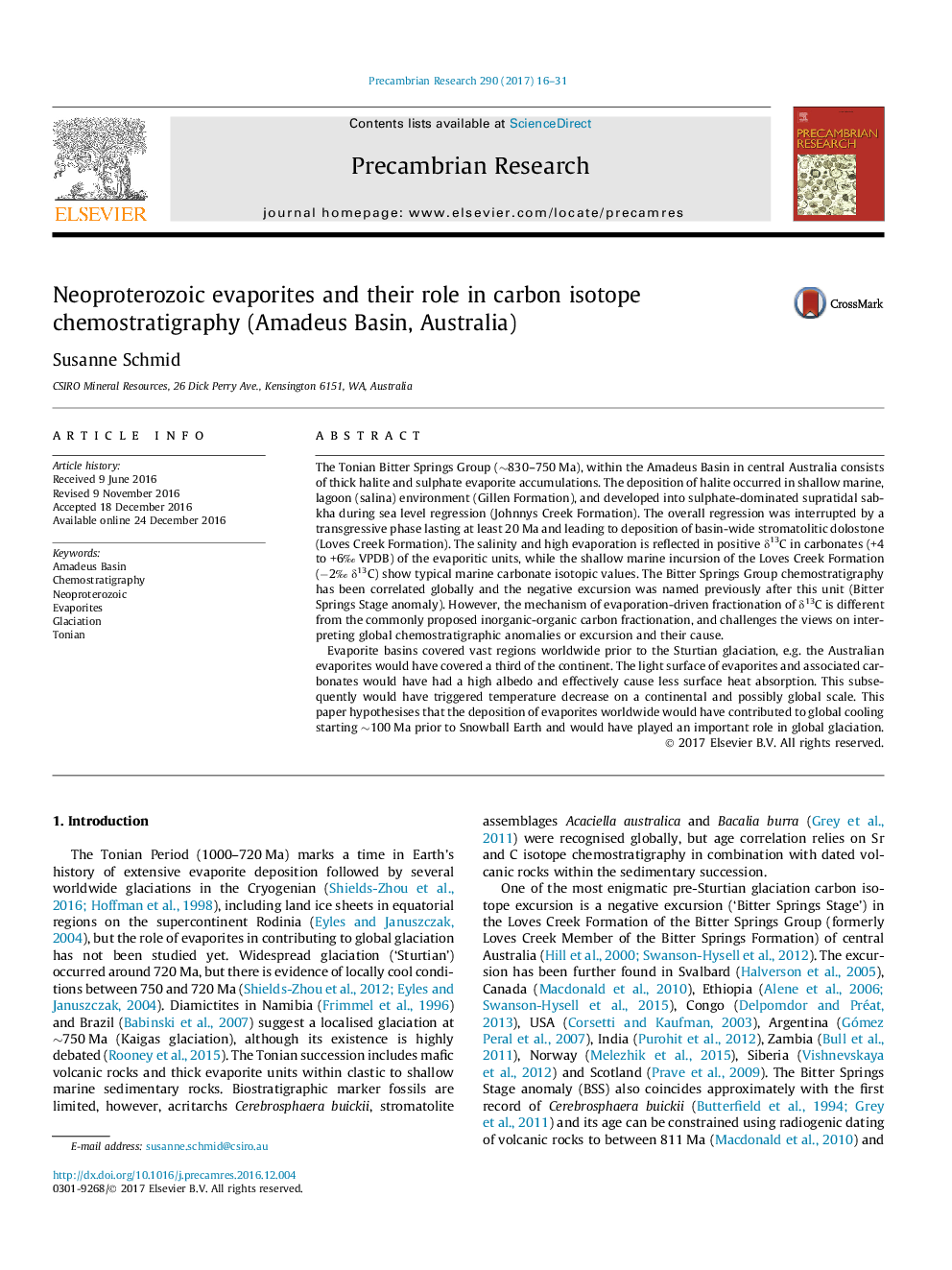| Article ID | Journal | Published Year | Pages | File Type |
|---|---|---|---|---|
| 5784865 | Precambrian Research | 2017 | 16 Pages |
â¢Evaporation-controlled carbon isotope fractionation prior to Sturtian glaciation globally.â¢Cause for Bitter Springs Stage negative excursion due to marine transgression during volcanism in Australia.â¢Increasing continentality and evaporite deposition caused lowering of global temperatures due to increased albedo.â¢Cryogenian chemostratigraphy showing negative BSS and cap carbonate excursion in a single drillhole.
The Tonian Bitter Springs Group (â¼830-750 Ma), within the Amadeus Basin in central Australia consists of thick halite and sulphate evaporite accumulations. The deposition of halite occurred in shallow marine, lagoon (salina) environment (Gillen Formation), and developed into sulphate-dominated supratidal sabkha during sea level regression (Johnnys Creek Formation). The overall regression was interrupted by a transgressive phase lasting at least 20 Ma and leading to deposition of basin-wide stromatolitic dolostone (Loves Creek Formation). The salinity and high evaporation is reflected in positive δ13C in carbonates (+4 to +6â° VPDB) of the evaporitic units, while the shallow marine incursion of the Loves Creek Formation (â2Ⱐδ13C) show typical marine carbonate isotopic values. The Bitter Springs Group chemostratigraphy has been correlated globally and the negative excursion was named previously after this unit (Bitter Springs Stage anomaly). However, the mechanism of evaporation-driven fractionation of δ13C is different from the commonly proposed inorganic-organic carbon fractionation, and challenges the views on interpreting global chemostratigraphic anomalies or excursion and their cause.Evaporite basins covered vast regions worldwide prior to the Sturtian glaciation, e.g. the Australian evaporites would have covered a third of the continent. The light surface of evaporites and associated carbonates would have had a high albedo and effectively cause less surface heat absorption. This subsequently would have triggered temperature decrease on a continental and possibly global scale. This paper hypothesises that the deposition of evaporites worldwide would have contributed to global cooling starting â¼100 Ma prior to Snowball Earth and would have played an important role in global glaciation.
